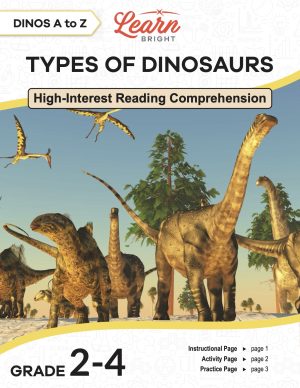Description
What our Operation Properties lesson plan includes
Lesson Objectives and Overview: Operation Properties explains the application of the commutative, associate, and identity properties of addition. This lesson prepares students to both create and identify fact families with a fun, interactive dice activity. At the end of the lesson, students will be able to understand and apply the commutative, associate, and identity properties of addition. The students will also be able to create and identify fact families. This lesson is for students in 1st grade and 2nd grade.
Classroom Procedure
Every lesson plan provides you with a classroom procedure page that outlines a step-by-step guide to follow. You do not have to follow the guide exactly. The guide helps you organize the lesson and details when to hand out worksheets. It also lists information in the blue box that you might find useful. You will find the lesson objectives, state standards, and number of class sessions the lesson should take to complete in this area. In addition, it describes the supplies you will need as well as what and how you need to prepare beforehand.
Options for Lesson
Included with this lesson is an “Options for Lesson” section that lists a number of suggestions for activities to add to the lesson or substitutions for the ones already in the lesson. One optional addition to this lesson is to use songs to teach the properties. You can also create large posters to be displayed in the classroom about each property. Another option is to post problems around the room on colored paper for your students to solve.
Teacher Notes
The teacher notes page includes lines that you can use to add your own notes as you’re preparing for this lesson.
OPERATION PROPERTIES LESSON PLAN CONTENT PAGES
Commutative Property of Addition
The Operation Properties lesson plan includes three content pages. Properties are characteristics that belong to a person or thing. For example, a property of cats is that they have whiskers.
You also see properties in math. Addition has several properties. One of these is the commutative property of addition. The word “commute” means to go back and forth. You might commute to school or to a job. The commutative property of addition states that the sum does not change when the addends change positions. The sum, or the answer to an addition problem, is the same when the addends switch places.
Let’s look at an example: 7 + 2 = 9 and 2 + 7 = 9. Therefore, 7 + 2 = 2 + 7. The addends are 7 and 2. When they change places in the problem, the sum (9) does not change.
Let’s look at another example: 4 + 6 = 10 and 6 + 4 = 10. Therefore, 4 + 6 = 6 + 4. The addends are 4 and 6. When they change places in the problem, the sum (10) does not change.
The commutative property of addition works for objects as well. If you looked at an aquarium, you could count all of the red fish first and then all of the yellow fish. You could also count all of the yellow fish first, followed by the red fish. The total number of fish in the tank would not change no matter which you counted first.
Associative Property of Addition
When you have more than two addends, you use the associate property of addition. The word “associative” comes from associate. To associate means to put things together or to group.
The associative property of addition uses parentheses to group numbers together. Parentheses tell you what to do first in a problem. Parentheses are grouping symbols. They show up every time you use the associative property of addition.
Let’s look at an example: (1 + 3) + 5 = 1 + (3 + 5). Therefore, 4 + 5 = 1 + 8. Finally, 9 = 9.
Let’s look at another example: (8 + 2) + 4 = 8 + (2 + 4). Therefore, 10 + 4 = 8 + 6. Finally, 14 = 14.
No matter how you group the addends, the sum is the same.
Identity Property of Addition
The simplest property is the identity property of addition. The word “identity” means being who or what something is. This is true for the identity property of addition.
When using the identity property of addition, you create an addition problem without changing the number. The only way to do this is to add zero, because adding zero does not change the original number. Therefore, to use this property, you simply add zero to your original number.
Let’s look at a few examples: 12 + 0 = 12 and 6 + 0 = 6. The original numbers were 12 and 6. Once you add zero, the number remains the same.
Unknown Addend Problems
You can change a subtraction problem to an unknown addend problem. Thinking about subtraction in terms of addition will help you learn the properties of addition. Unknown addend problems ask what number needs to be added to another to get a specific sum.
Let’s look at an example: 10 – ? = 2. You can ask yourself what number added to 2 will produce 10 (? + 2 = 10)? You’ve changed the subtraction problem into an addition problem. When you add 8 to 2, you get a sum of 10. Therefore, 10 – 8 = 2.
Let’s look at another example: 7 – ? = 4. You can ask yourself what number added to 4 will produce 7? You’ve changed the subtraction problem into an addition problem. When you add 3 to 4, you get a sum of 7. Therefore, 7 – 3 = 4.
Fact Families
Fact families show all of the possible addition and subtraction statements resulting from three numbers. Fact families help you understand properties of addition by showing you how the numbers interact with one another.
Let’s look at the fact family for 10, 8, and 2: 8 + 2 = 10, 2 + 8 = 10, 10 – 2 = 8, and 10 – 8 = 2.
Finally, let’s look at the fact family for 3, 4, and 7: 3 + 4 = 7, 4 + 3 = 7, 7 – 4 = 3, and 7 – 3 = 4.
OPERATION PROPERTIES LESSON PLAN WORKSHEETS
The Operation Properties lesson plan includes four worksheets: an activity worksheet, a practice worksheet, a homework assignment, and a quiz. You can refer to the guide on the classroom procedure page to determine when to hand out each worksheet.
DICE ACTIVITY WORKSHEET
For the activity worksheet, students will roll dice to fill in the squares on the worksheet and create addition problems. They will then use the commutative property to solve.
SOLVING PROBLEMS PRACTICE WORKSHEET
The practice worksheet asks students to solve addition problems using various properties. They will also create fact families for different numbers.
MATCHING HOMEWORK ASSIGNMENT
For the homework assignment, students will first connect the matching problems. They will also connect vocabulary terms with their examples.
QUIZ
This lesson also includes a quiz that you can use to test students’ understanding of the lesson material. For the quiz, students will solve problems using the properties of addition. They will also create fact families.
Worksheet Answer Keys
This lesson plan includes answer keys for the practice worksheet, the homework assignment, and the quiz. If you choose to administer the lesson pages to your students via PDF, you will need to save a new file that omits these pages. Otherwise, you can simply print out the applicable pages and keep these as reference for yourself when grading assignments.









